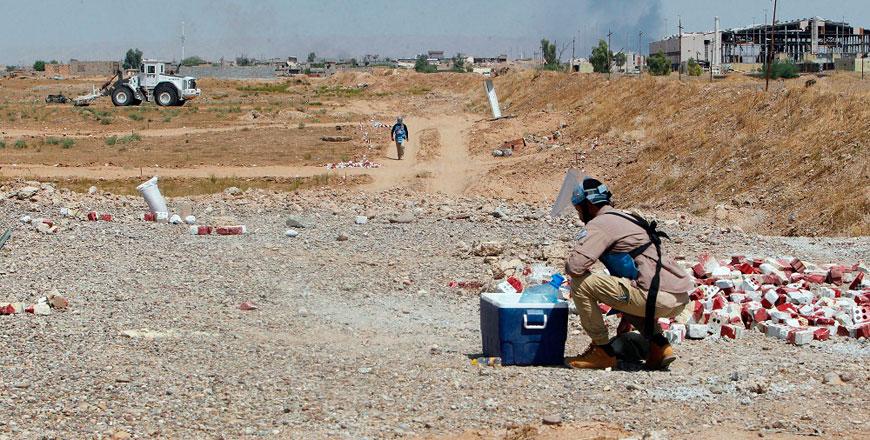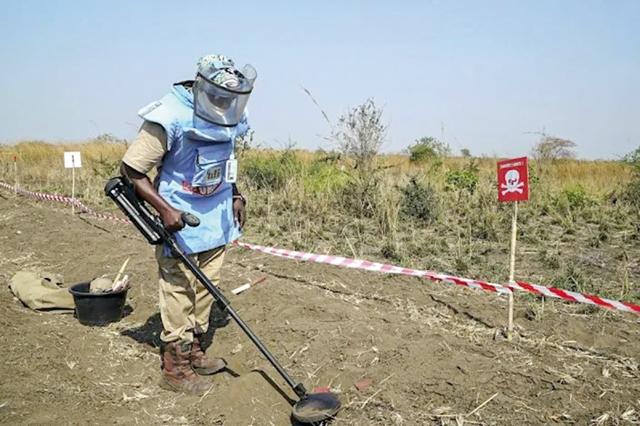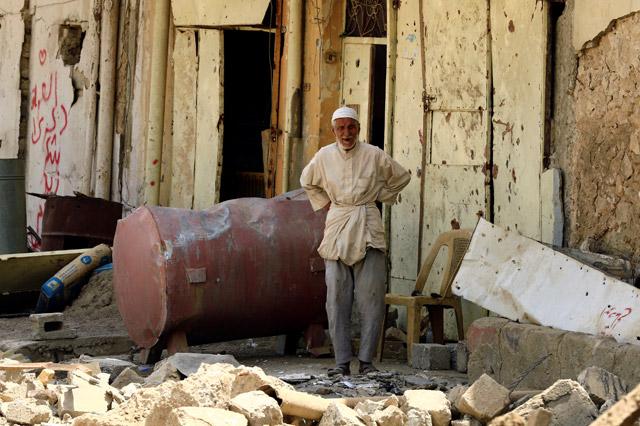You are here
A legacy of war: UN clears thousands of explosives in Iraq
By Reuters - Feb 07,2019 - Last updated at Feb 07,2019

Damaged buildings are seen in the Old City of Mosul, Iraq, on January 30 (Reuters photo)
GENEVA — The United Nations cleared almost 17,000 bombs, suicide belts and other explosive hazards in Iraq last year and the dangerous work of sifting through the debris of war — 7.6 million tonnes in Mosul alone — will take many years, UN experts said on Thursday.
There are 100,000 damaged buildings in the country that could harbour explosive hazards such as improvised explosive devices (IEDs) left by retreating Daesh fighters, said Pehr Lodhammar, head of the UN Mine Action Service (UNMAS) in Iraq.
The bulk of the clearance work is likely to take a decade, and 2 million displaced people are keen to go home. UNMAS trained almost 500,000 people last year to help them recognise the risks.
Last year’s haul of around 17,000 explosive hazards included a ‘‘staggering’’ 2,000 IEDs, Lodhammer told a news conference, noting these had pressure plate fuse triggers, trip wires, infrared devices, anti-lift devices, remote control devices, or a combination of those things.
That figure included 782 suicide belts, many of them actually fitted on dead ISIS fighters found in the debris, he said.
Daesh held Mosul for three years, and UNMAS arrived when the fighting ended in 2017. Its experts are finding explosive hazards almost everywhere, Lodhammar said. It is also working in Fallujah, Tikrit and Kirkuk, and expanding to Sinjar.
Picking through the flattened wreckage of Western Mosul in temperatures close to 40ºC is gruesome work and physically and psychologically demanding, UNMAS director Agnès Marcaillou said.
‘‘You have decomposing body parts that are still attached to suicide belts. You are walking around in a stench and clouds of flies, and at any given time you can have a rat or a cat or dog actually detonating something that is buried under there,’’she said.
Lodhammar said the task was not traditional one-dimensional mine clearance.
‘‘These are not mines any longer. An anti-personnel mine would have up to 230-250 grammes of explosives in it. Now we’re looking at 10-20 kilogrammes.’’
Buildings up to nine storeys high needed to be searched and made safe, while many of the bombs and shells dropped on Mosul by Iraqi security forces and the US-led coalition had failed to go off, he said.
There were 113 kg bombs, some still buried seven-eight metres down.
Generally at least 10 per cent of bombs are assumed not to explode, and if not cleared away they may turn up decades later, like the World War II bombs that are still discovered in Germany, he said.
Related Articles
BAIJI, Iraq — One man lost his uncle. Another is mourning two sons.
JUBA — The UN mine clearance worker gingerly sifts through a patch of dirt with a trowel in scrubland on the outskirts of a village near Sou
SHEIKH AMIR, Iraq — As people return home to Mosul and other areas of northern Iraq freed from the Daesh terror group, homemade bombs and ex



















